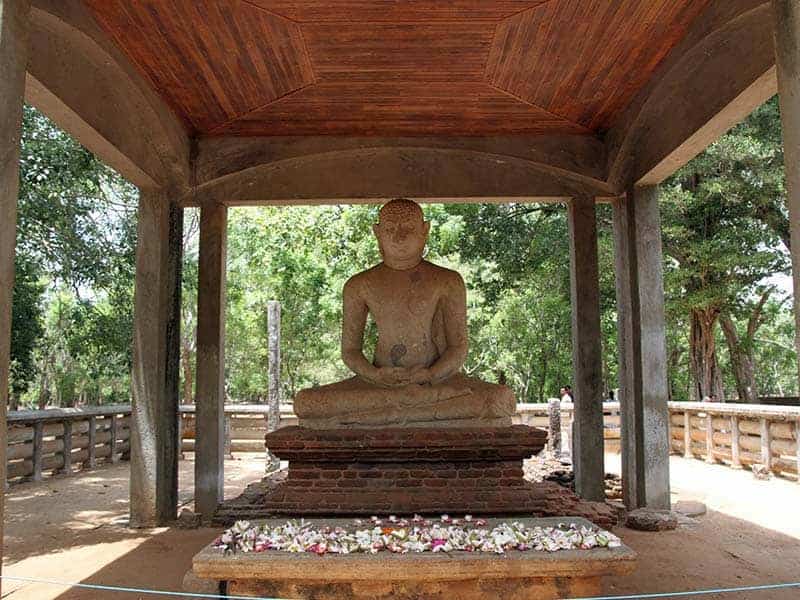The Samadhi Buddha statue at Anuradhapura’s Mahamewna Park is among the best-preserved statues in the country and is famous for setting the bar against which all other statues of its kind are judged. In age, the Samadhi Buddha statue dates back to either the 3rd or 4th Centuries AD albeit its creator and sponsor are unknown. The park of Mahamewna though dates back to the 3rd Century BC, and was among the earliest large parks in the country, sponsored by King Mutasiva. The park remained a major landmark of the city, and even became the site of the orthodox Buddhist fraternity of the country, the Theravada school; this chief Theravada center was referred to as the Mahavihara Fraternity.
It also houses the sacred Bo Tree.
The statue must have been part of a monastic complex belonging to the Mahavihara sect. It is made of dolomite, a form of marble or at least the original work was until it was destroyed due to centuries of invasion and treasure hunters. The present Samadhi Buddha statue shows him in a state of meditative reflection, one hand on top of the other on his lap in a dhyana mudra, a gesture of peace. His feet are crossed in the veerasana pose. In total, this is a large statue, seven feet three inches tall. As it is heavily reconstructed, it is thought by many to have somewhat lost its original beauty. Especially in the nose; this had to be redone with cement after it was found damaged during the 19th Century. The eye sockets supposedly held gems in them. Another interesting feature of the Samadhi Buddha statue is that there are three expressions from three angles. From the front, he is neutral; from the left there is sadness, and on the right, there is a smile. This counts as an ingenious and almost lifelike and thought-provoking work of art, unique among local statues.
Written by Vasika Udurawane for Travel Lanka Compass



0 Comment